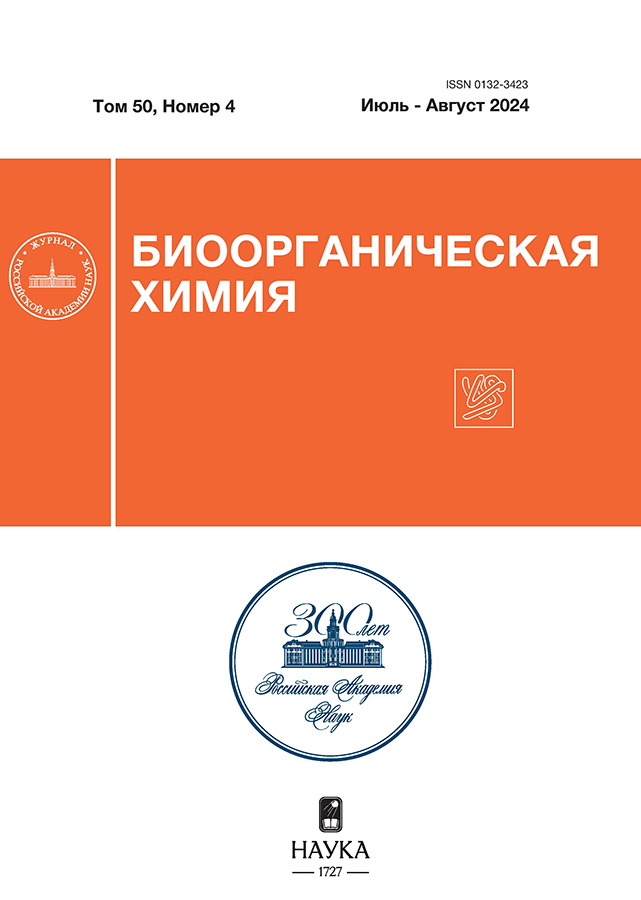The Influence of Peptide Linkers on Functional Properties of Hybrid Structures with the Selective pH-Dependent Binding to Cancer Cells
- 作者: Frolova A.Y.1, Pakhomov A.A.1, Deyev S.M.1, Martynov V.I.1
-
隶属关系:
- Shemyakin–Ovchinnikov Institute of Bioorganic Chemistry, Russian Academy of Sciences
- 期: 卷 50, 编号 4 (2024)
- 页面: 517-525
- 栏目: Articles
- URL: https://edgccjournal.org/0132-3423/article/view/670855
- DOI: https://doi.org/10.31857/S0132342324040113
- EDN: https://elibrary.ru/MWPLFG
- ID: 670855
如何引用文章
详细
Most of the modern cancer therapies are non-specific and have adverse side effects on the body. Nowadays, targeted cancer therapies are being developed, in particular using targeting peptides that selectively bind to cancer cells. The aim of the present work is to explore the prospects of using a peptide pHLIP that binds to cancer cells at decreased pH values, as a part of recombinant protein-peptide construct for cancer diagnosis and targeted therapy. Hybrid structures based on the fluorescent protein EGFP and a linker sequence connecting fluorescent protein to two different pHLIP variants were obtained. The effect of different linkers on the pH-dependent binding of the constructs to cells, as well as on the efficiency of EGFP chromophore synthesis within the hybrid construct was investigated.
全文:
作者简介
A. Frolova
Shemyakin–Ovchinnikov Institute of Bioorganic Chemistry, Russian Academy of Sciences
编辑信件的主要联系方式.
Email: anastasiya_frolova_box@mail.ru
俄罗斯联邦, ul. Miklukho-Maklaya 16/10, Moscow, 117997
A. Pakhomov
Shemyakin–Ovchinnikov Institute of Bioorganic Chemistry, Russian Academy of Sciences
Email: anastasiya_frolova_box@mail.ru
俄罗斯联邦, ul. Miklukho-Maklaya 16/10, Moscow, 117997
S. Deyev
Shemyakin–Ovchinnikov Institute of Bioorganic Chemistry, Russian Academy of Sciences
Email: anastasiya_frolova_box@mail.ru
俄罗斯联邦, ul. Miklukho-Maklaya 16/10, Moscow, 117997
V. Martynov
Shemyakin–Ovchinnikov Institute of Bioorganic Chemistry, Russian Academy of Sciences
Email: anastasiya_frolova_box@mail.ru
俄罗斯联邦, ul. Miklukho-Maklaya 16/10, Moscow, 117997
参考
- Reshetnyak Y.K., Andreev O.A., Lehnert U., Engelman D.M. // Proc. Natl. Acad. Sci. USA. 2006. V. 103. P. 6460–6465. https://doi.org/10.1073/pnas.0601463103
- Svoronos A.A., Bahal R., Pereira M.C. Barrera F.N., Deacon J.C., Bosenberg M., DiMaio D., Glazer P.M., Engelman D.M. // Mol. Pharm. 2020. V. 17. P. 461– 471. https://doi.org/10.1021/acs.molpharmaceut.9b00883
- Frolova A.Yu., Pakhomov A.A., Kakuev D.L., Sungurova A.S., Deyev S.M., Martynov V.I. // Biochem. Biophys. Res. Commun. 2022. V. 612. P. 141–146. https://doi.org/10.1016/j.bbrc.2022.04.112
- Adochite R.-C., Moshnikova A., Golijanin J., Andreev O.A., Katenka N.V., Reshetnyak Y.K. // Mol. Imaging Biol. 2016. V. 18. P. 686–696. https://doi.org/10.1007/s11307-016-0949-6
- Reshetnyak Y.K., Moshnikova A., Andreev O.A., Engelman D.M. // Front Bioeng. Biotechnol. 2020. V. 8. P. 335. https://doi.org/10.3389/fbioe.2020.00335
- Dharmaratne N.U., Kaplan A.R., Glazer P.M. // Cells. 2021. V. 10. P. 10030541. https://doi.org/10.3390/cells10030541
- Liu Y.-C., Wang Z.-X., Pan J.-Y., Wang L.-Q., Dai X.-Y., Wu K.-F., Ye X.-W., Xu X.-L. // Molecules. 2023. V. 28. P. 2175. https://doi.org/10.3390/molecules28052175
- Frolova A.Yu, Pakhomov A.A., Kakuev D.L., Sungurova A.S., Dremina A.A., Mamontova E.D., Deyev S.M., Martynov V.I. // J. Photochem. Photobiol. B Biol. 2023. V. 249. P. 112803. https://doi.org/10.1016/j.jphotobiol.2023.112803
- Weerakkody D., Moshnikova A., Thakur M.S., Moshnikova V., Daniels J., Engelman D.M., Andreev O.A., Reshetnyak Y.K. // Proc. Natl. Acad. Sci. USA. 2013. V. 110. P. 5834–5839. https://doi.org/10.1073/pnas.1303708110
- Pakhomov A.A., Frolova A.Yu., Tabakmakher V.M., Chugunov A.O., Efremov R.G., Martynov V.I. // J. Photochem. Photobiol. B Biol. 2020. V. 206. P. 111853. https://doi.org/10.1016/j.jphotobiol.2020.111853
- McRae S.R., Brown C.L., Bushell G.L. // Protein Expr. Purif. 2005. V. 41. P. 121–127. https://doi.org/10.1016/j.pep.2004.12.030
补充文件













